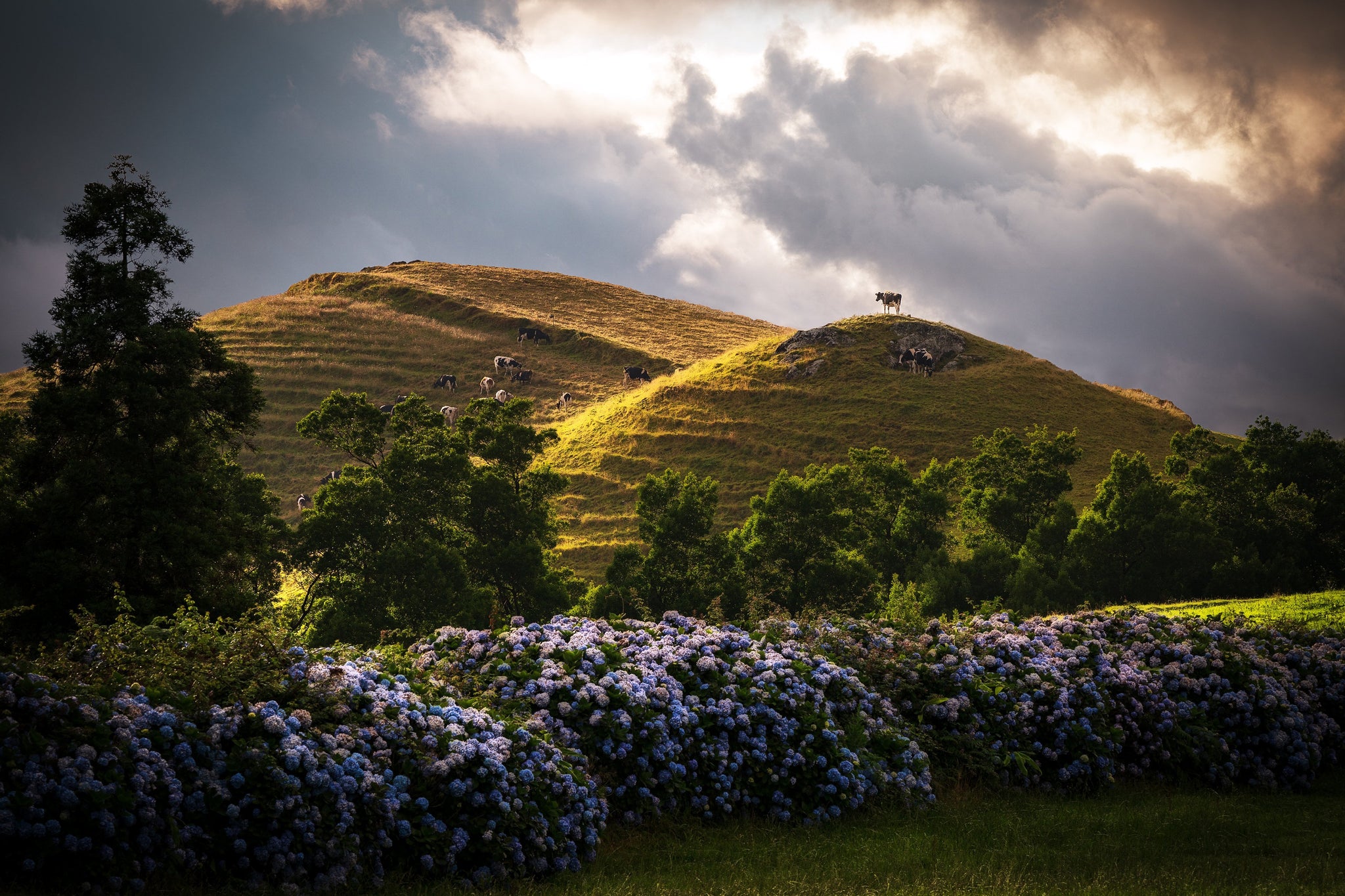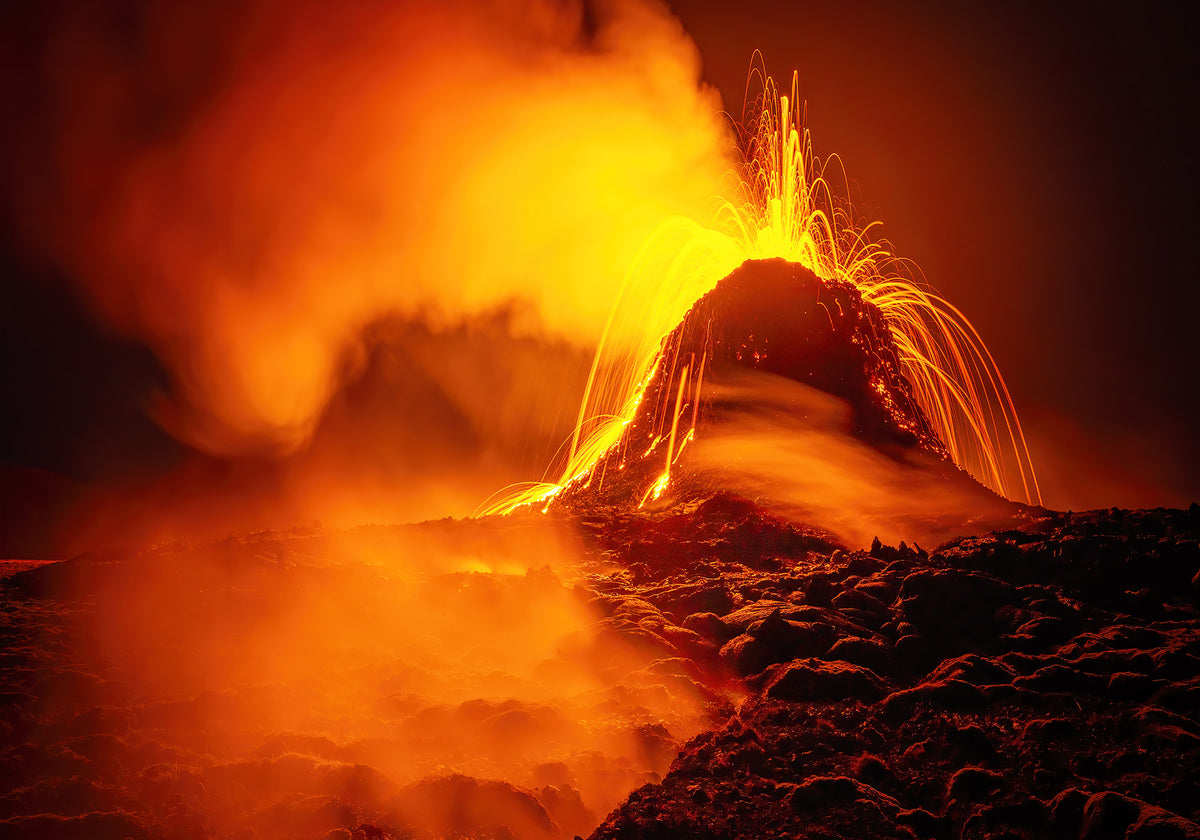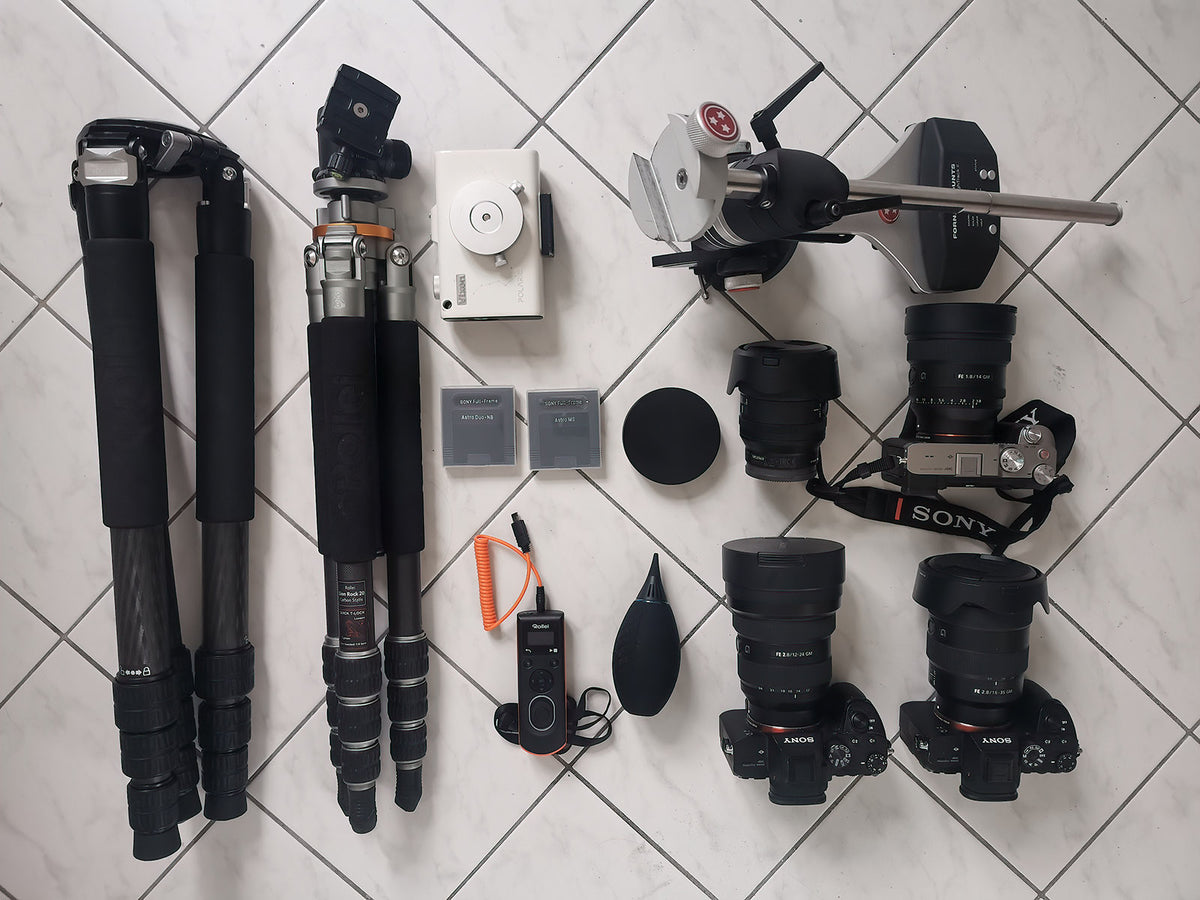
São Miguel – Idyllic natural paradise in the Azores
In the middle of the Atlantic Ocean, about 1400 km west of mainland Europe, lies the archipelago of the Azores. An island chain consisting of nine larger islands including the largest island of São Miguel with the capital Ponta Delgada. That's exactly where we ended up at the beginning of August.

After a few minutes we had left the capital behind us and drove through grassy hilly landscapes decorated with blue-violet blooming hydrangeas and comfortably grazing cows. On the way, we quickly noticed that we were on an offshore island: From low-hanging fog to hurricane-like downpours to bright sunshine, the weather, including all light conditions, can change within a few minutes. Ideal conditions for every landscape photographer.
At sunset, as already mentioned, it cleared up unexpectedly briefly and a cow was enthroned in the distance on one of the numerous hills. No problem for a snapshot with the 600mm super telephoto zoom. Briefly turned on the stabilizer and zoomed in. The photo is ready, which describes the landscape of the Azores fantastically.


Since the Azores, like Iceland, belong to the Mid-Atlantic Ridge, they are of volcanic origin. There are a total of 26 active, but fortunately dormant volcanic systems. Five of them are in São Miguel alone. The aim was to discover them. We decided to experience the sunrise at the crater lake "Lagoa do Fogo" (Lake of Fire) in the central part of the island. At first glance, this was not a good idea: The crater was completely covered in fog and it was raining heavily. Just as we were about to break off, it suddenly cleared up and we were able to admire the breathtaking lagoon at a relatively low position of the sun. Just that Azores moment again! Here, the ultra-wide-angle lens provided a unique perspective: the round-shaped crater including the lake of fire surrounded by the faintly distinguishable but slightly shiny Atlantic Ocean.

Afterwards we went to the main crater "Sete Cidades" in the west of the island. Arriving at the viewpoint "Miradouro da Vista do Rei" we noticed a huge abandoned building complex. After a short research, it was clear that it was the abandoned 5-star luxury hotel "Monte Palace". Investors underestimated the often foggy and very changeable weather in the Azores. Inside the hotel, the size only really became apparent: hundreds of individually graffiti-sprayed rooms connected by deserted corridors on a total of five floors. In the center is a huge lobby that is in acute danger of collapsing. What did it all look like in the past? One thing is for sure: nowadays it is the ultimate playground for every Lost Place photographer!

After this discovery tour, we were allowed to admire the sunset in the crater. With the wide-angle lens, the foreground with the beautifully blooming hydrangeas, the crater "Sete Cidades" with the crater lake of the same name as well as the sky including the sun with a very beautifully pronounced sun star could be taken in a panorama: pure idyll!
In the north of the island lies the small town of Vila Franca do Campo. A visit is definitely worthwhile, because the offshore volcanic island Ilheu de Vila Franca do Campo turned out to be an extremely photogenic motif for an aerial photograph.

The east of the island is characterized by its rugged cliffs. Highly recommended is the coastal town of Nordeste with its adventurous steep road to the lighthouse Farol da Ponta do Arnel. An aerial view of the scenery from the ocean shows the lighthouse free-standing in front of the cliffs of São Miguel.
During the night we tried to take a look at the starry sky. Unfortunately, this turned out to be almost impossible due to many clouds and moonlight. Luckily, the heavens opened up for a window of only a few minutes. We could see a fantastically bright Milky Way with incomparably beautiful colors above the sea of clouds of the Atlantic. Wow!

So if you are looking for uncrowded and enchanting landscapes, changeable weather and want to risk a look into one of the most beautiful starry skies in Europe, the Azores are an absolute insider tip. The other islands can be easily reached by ferry or plane if there is enough time.
Thanks to Riccardo Schläger for the great support.

Leave a Comment
Comments will be approved prior to publication.
View full article

My imaging technique | Deep Sky

Photography in Iceland: volcanic eruption and northern lights


Stefan Liebermann
Author